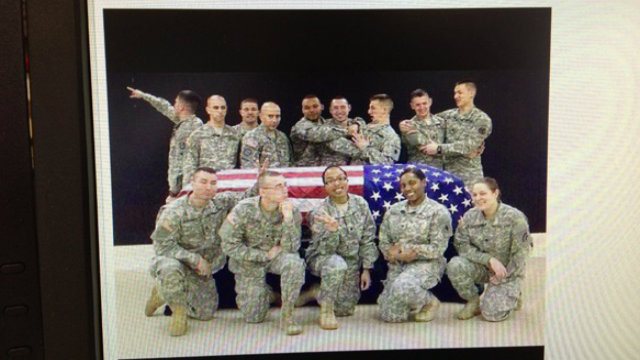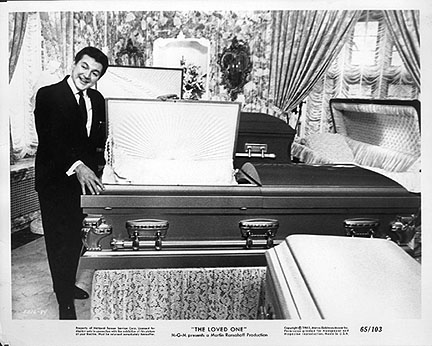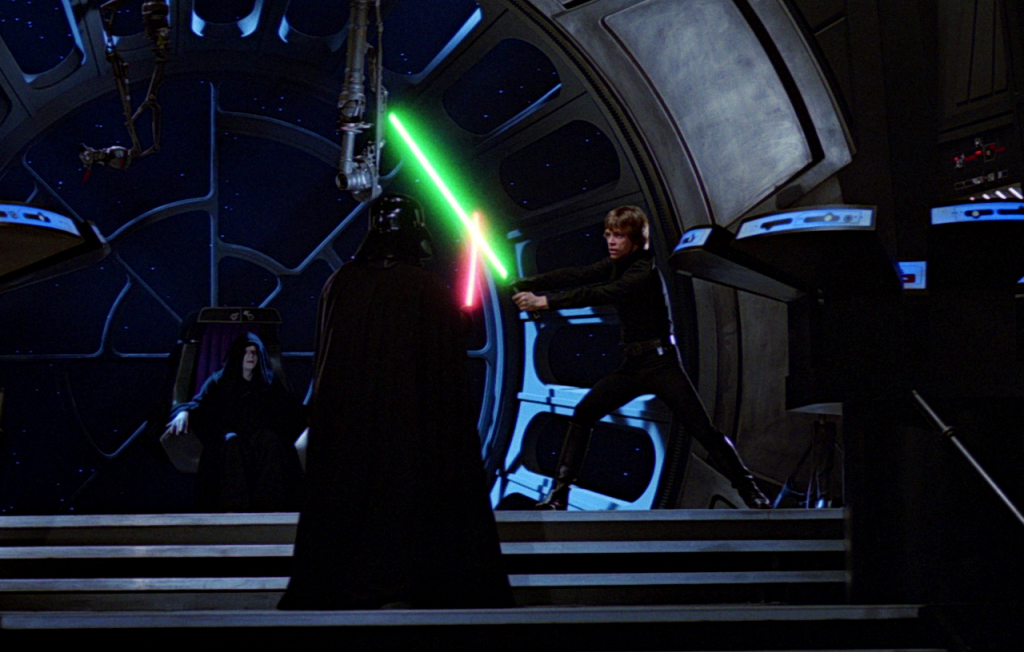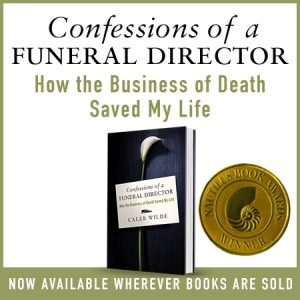Funeral Directing
10 Thoughts in Defense of Funeral Selfies
As is often the case, we tend to get house calls in the middle of snow storms. And this past week was no different. I plowed out the funeral home’s parking lot, pulled out the pick-up van and we were on our way. We arrived to a packed house where family and friends encircled the deceased in a garrison of grief.
“Direct cremation”, the family said. “That’s what she wanted.” As is our modus operandi we assured them, “Take as long as you need to say your good-byes.” And with that permission, six members of the family proceeded to pull out their cell phones, leaned down and took a photo with the deceased.
Funeral photography, funeral selfies and “corpsies” via mobile devices are becoming more and more normal at death beds AND funerals, despite the fact that they’re seen by many as pure sacrilege. Huffington Post stated that such images are “evidence the apocalypse can’t come soon enough.” And with the boneheaded cadaver selfie and this photo below (read more HERE) in the news lately, it’s no wonder the Huffington Post feels the way they do. And let me be clear, the cadaver selfie and this boneheaded photo below AREN’T cool and they AREN’T the funeral selfies that I’m defending.
I myself once felt uncomfortable with the idea of deathbed / funeral selfies, but as I’ve seen more and more people take these photos, I’ve slowly become more open. Here’s why:
One. There’s a long history of funeral photography. Heck, I think there’s a one million year old photo of a dead Homo erectus floating around the internet.
Two. Unlike the cadaver selfie or the photo above, funeral photography is usually motivated by some kind of love.
Intent is part of the issue when talking about funerals and photography, etc. Why do it? What’s the motivation? And although the motivation isn’t always clear, it IS clear most take these photos as a token of remembrance. A token of love.
Three. If you happen upon a dead Sasquatch, there’s no decorum … snuggle up to dead Bigfoot and TAKE THAT SELFIE!
Four: Selfies don’t equal narcissism.
The very term “narcissism” comes from the Greek myth of Narcissus. Narcissus was drawn to a pool of water, where he saw his reflection and fell in love with it. He was so fixated upon his beauty that he never left his reflection until his death.
At first glance, selfies would seem like the epitome of narcissism, and indeed many are self-serving. But many (most) are about belonging.
Five. Emerging culture cares more about belonging than decorum.
We’ve moved from the neatly defined groups/tribes of pluralism to the blending of fragmentation. We are like quilts. We’re like a mosaic.
With fragmentation, the social rules that come with the strictly defined boundaries of pluralism become less and less important. With fragmentation, belonging and identity become of prime importance. Belonging and identity is decorum.
Six. Deathbed / funeral selfies are often about belonging.
Social media is how many of us relate to the world. We communicate through texts, facebook messages and photos. The selfie is a way of saying “this is where I am at … this is what I’m doing … this is who I am.” And the funeral selfie is how we say, “This part of my community has died and I just wanted to let you know.” In the minds of many, taking a selfie with the deceased is right because it’s about expressing a connection to the deceased and wanting to share that connection with others. It’s about identity and belonging.
Seven. Permission.
That’s the thing. If you want to take any form of funeral photography, ask first. While you may be a part of emerging culture, it’s likely your parents, grandparents, aunts and uncles are NOT. They have a sense of decorum that you might lack, so ask their permission before you take your photos. And for god’s sake, don’t jump in the casket so you can get “a really good close up”. And, if the deceased has a Facebook or twitter account, it’s probably not good to tag them in your photo.
Eight. More permission.
Just because you have permission to take the photo doesn’t mean you have permission to share the photo on Facebook. Yeah, we love you and we love your grandmother, but when we’re sitting down to eat some meatloaf for dinner we’re not THAT interested in having your corpsie show up in our Instagram feed.
So, share it in a closed group … or with specific friends.
Nine. More professionalism.
People like a degree of professionalism around death. I think in the future, as deathbed / funeral photograph gains some ground, we’ll find more professional ways to photograph the dead … and maybe we’ll even hire death photographers.
Ten. Since social media is how the younger generation relates with the world, it will likely be how the younger generation relates with death.
So, a funeral selfie isn’t about stupid kids and their narcissistic attempts to express themselves. It’s about how they/we relate with a world that’s being defined more and more by globalization and fragmentation … it’s about belonging.
Good ahead. Get permission. And take those photos.
“This Funeral Isn’t About You”
That’s what I wanted to say.
If you know me, you know that I tend to be blunt. Awkwardly so.
Being that blunt objects aren’t allowed at funerals, I’ve learned the art of professional speak.
Situation Number 1:
Blunt Caleb: “When we picked your dad up from the nursing home, he was looking all purple and reddish, but after we embalmed him, we were able to flush the discoloration out of his face.”
Professional speak, “Your dad looks great.”
Situation Number 2:
Blunt Caleb: “Do you want that beard shaved off your mom’s face?”
Professional speak Caleb ignores asking that question all together and just shaves mom’s face.
Americans — maybe even Westerns as a whole — are impatient. We rarely have quiet. The TV’s constantly on. Our smart phones are ever at our side. Ear buds in our ears. Meditation is a foreign concept. Prayer is avoidable at all costs. And the patience learned in the silence is never attained. And then comes death and the silence that comes with it. The meditation. The prayer. The lack of words. And when the results of grief work don’t come immediately, we become impatient and think, “Something is dreadfully wrong with me!” And we’re right. We usually conclude that we’re deeply depressed; the reality may simply be that we’re deeply and intrinsically impatient, unable to find the peace in the silence that comes from death. Maybe we’re just as afraid of the silence as we are of death.
Death brings its own pace of life … its own schedule. It’s never convenient. But we want it to be. We want to control it. We want to put it on an itinerary that fits our fast paced, purpose driven lifestyles.
Perhaps that battle for control is nowhere more apparent than at a viewing, especially when the viewing line mimics the slow moving, long lines we see at a popular amusement park ride.
This past Saturday night, I stood there behind the register book, striking up conversation with people as they enter the sanctuary. The viewing line snakes around the church, down the hall and into the basement as we try to extend it through the corridors of the church so as to keep the line from going out into the cold elements of a Pennsylvania winter. The family of the deceased is taking their time, talking to each and every person who has come out on this chilly night.
“Other funeral directors stand by the family’s receiving line and tell them to keep their conversations short and simply”, one person stated.
“We don’t do that”, I said politely.
Another couple comes through the line and complains that they’ve been standing in line for half-an-hour AND by the look of things, they’ll probably be in line for another half-an-hour. “Can’t you do anything?” they beg.
I try to make a joke … I tell them that, like Disney World, we are going to create an express line, where you can bypass the crowd for a fee. “That’s a great idea”, they say. “We’d pay $50 to skip this line.”
After having this conversation about 10 times over the next hour, I’m getting tired of my joke and I’m getting tired of people complaining.
I want to pull them close to my face and whisper, “This isn’t about you.” But that would be blunt Caleb speaking and that Caleb isn’t allowed around death.
Perhaps the greatest loss that comes with the drone of our busy lives is that in losing silence, we’ve lost patience, and in losing patience we’ve become so inherently selfish that when we go to a funeral we forget that it’s not about us.
It’s That Time of Year When Morticians Become Monsters
Funeral directors can crack anytime of the year, but during the winter, it seems our mental state becomes much more vulnerable to suffering from the occupational hazards of burnout, compassion fatigue and depression. Sure, many of us who live in the colder climates of the world suffer through the winter blues; but for those in funeral service, winter often means more sickness, more death and more stress placed upon our shoulders.
Death runs strong before, during and after the holidays … and then somewhere before the start of spring, it seems he pulls a double shift. And as those who follow Death’s movements, we too start pulling the double shifts.
After a month or so of pulling long days, we reach a point and suddenly we feel like we have nothing left to give. So, we push through our exhaustion and it isn’t too long before we morph into stress induced monsters. Yes, monsters.
Death is wild. It has no desire to be tamed. And it’s a capricious boss. It doesn’t follow a schedule. It doesn’t listen to our cries for reprieve. It doesn’t stop when we’re exhausted. We have no control.
And this lack of control is the problem. Since death doesn’t hear our complaints, since it can’t be fought and subdued, we funeral directors will often displace our aggression onto ourselves and our families. And this is where the monster is made.
Pedersen, Gonzales, & Miller write that,
“Displaced aggression is thought to occur when a person who is initially provoked cannot retaliate directly against the source of that provocation and, instead, subsequently aggresses against a seemingly innocent target.”
This “seemingly innocent target” is usually those around us: our spouses, our children, our friends and ourselves.
It’s in these time of burnout that some of us start to drink more heavily; some of us will see our families fall apart before our eyes; and others (like me) will spiral down into deep dark places of depression. Those in the funeral industry can suffer burnout anytime of the year; but during this time of the year particularly, the road can become very difficult.
Often we don’t realize we’re burnt out until it’s too late. We’ve been working so hard trying to stay on top of the funerals we’re arranging that we simply don’t have time to reflect and take stock of our personal lives. Our schedules become so busy that we stop going to the gym, we stop eating healthy, getting enough sleep; and we let our hobbies fall on the wayside.
And out of nowhere our partner leaves us.
Out of nowhere we’re contemplating suicide.
Out of nowhere we’re using a destructive coping mechanism to get through the stress of Death’s spree.
Maybe I’m wrong, but I’ve noticed that the funeral industry doesn’t offer a good support system when it comes to the personal mental and physical health of its workers. When one of us gets burnt out, there’s rarely someone there to council you. Maybe I’m wrong, but I don’t see those in funeral service being encouraged to see out professional help from psychologists.
And maybe it’s time to change that. Maybe it’s time we start recognizing that it happens often in this industry. Maybe it’s time to start doing something about it.
So, if you’re burnt out right now, let me encourage you: seek help. It’s not okay for you to be burnt out. In fact, you’re robbing your family and friends, the people you serve and yourself. You are NOT strong enough to do this on your own. It’s time to overcome the monster.
When You Should Fire Your Funeral Home
Before I tell you when you should fire your funeral home, bear with me as I describe the situation that prompted this little blog post:
I traded in my convertible for a used sedan last week. We’re thinking about kid number two, so it was time for me to grow up and get something with four doors. After doing a bunch of research, I found a well priced used car on AutoTrader that was only about an hours drive away from Parkesburg.
Even though I consider myself a well-informed car buyer, I hate the car buying experience. Mainly because I hate used car salesman. If you’re in car sales or have ever been in car sales, I’m sorry. I would probably like you in any other life context other than when you’re trying to sell me on a car. Really, I hate the pressure. I know the pressure, the double talk, the various sales tactics are coming, and I role play how I’ll respond … but when the time comes to hammer out a deal … ermahgerd.
This particular used car dealership low balled my trade-in. And I fell for it. And now, a week removed, I’ve resigned myself to losing a couple thousand dollars.
When it comes to spending money my mind sometimes gets cloudy. I continually question myself … what are my motives for buying this? Is it really worth it? Are there any smarter buying options? On and on and on until I get brain paralysis and become slightly impulsive only to suffer through a week or two of buyers remorse immediately after my purchase.
Grief and pressure have similar effects upon a person’s decision making. The clouding. The impulsiveness. Factors that both funeral directors and car salesman can all too easily take advantage of if they so desire.
In fact, grief is, in many ways, similar to alcohol inebriation when it comes to decision making. You can’t and shouldn’t make big decisions when you’re grieving. Just as some legal contracts aren’t legally binding when one of the persons involved is drunk, so I’m not really sure that a funeral contract should be entirely binding when one of the persons is suffering from severe grief.
In its original 1975 study on the unethical practices of the funeral industry, the Federal Trade Commission wrote:
Each year, millions of families are forced by the death of a relative to make one of the largest consumer purchases under severe handicaps of time pressures, emotional distress and lack of information or experience. There are few, if any industries where the ultimate consumer is so disadvantages or where his normal bargaining power is so diluted in a situation of such immediate need.
(ON A SIDE NOTE: I can’t stress enough how important it is to think about dying and death BEFORE it takes place. Write a living will, write out your will, name a power of attorney, name an executor. If you can, make “prearrangements” with a funeral home well before you die, that way your loved ones aren’t confused about what you want; nor are they having to make funeral decisions in their confused and grief stricken state of mind when you die.)
When we meet with families, we recognize this “grief confused” state and we usually give families a preface before we sell them anything, especially a casket. When we go into the casket “showroom”, we preface it with something like this, “We aren’t salesmen. We want you to make an informed decision and we won’t push you in any direction.” In fact, we try to “down-sell” caskets instead of “up-sell” them. Simply put, the expensiveness and beauty of a casket has absolutely no correlation to the amount of love you have for the deceased. If you want to buy them something nice, that’s fine, but a pine box serves the purpose equally well.
If you EVER feel pressure from a funeral home or funeral director to buy something more expensive — or something you don’t want — FIRE THEM! Seriously, just fire them. Walk out if you need to. The fact is that your mind is already clouded by grief and the last thing you need in your life is something trying to squeeze money out of you … because they will. You just experienced a death in your life. You need people who love you, NOT people who want to exploit you.
Yes, firing a funeral director at this point in the game is like walking out midway through a haircut. But it can be done and it has been done. We’ve had a couple families who have fired their funeral home and call us. Thankfully, we’ve yet to be fired, although if the day comes, we’ll be understanding.
Firing someone can be awkward. But it’s worth it. You don’t need to be exploited in your grief.
Help Us, Social Media. You Are Our Only Hope.
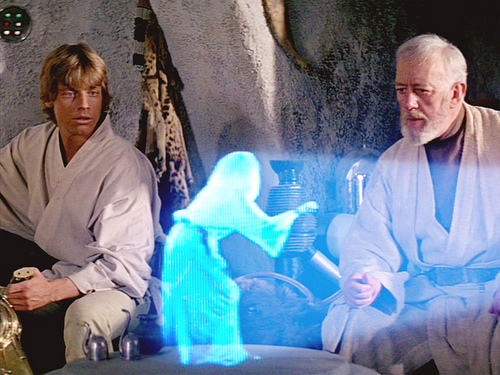 The funeral industry is too often known for its worst practitioners. The practitioners who take financial advantage of the bereaved in their most helpless state. Those who price gouge and exploit. Those who use the dark side of the Force.
The funeral industry is too often known for its worst practitioners. The practitioners who take financial advantage of the bereaved in their most helpless state. Those who price gouge and exploit. Those who use the dark side of the Force.
So how can you – the consumer – distinguish between the funeral homes that genuinely want to serve you and those that want to weasel their way into your wallet?
Some suggest that the distinction is as easy as corporate vs. family run, that corporate run funeral homes are the bad guys and family owned are suit wearing angels (i.e. Six Feet Under). And while it may be true that corporate tends to be more about the bottom line, the assumption that all family owned funeral homes are good is just plain FALSE. I’ve seen many family funeral directors that hide horns underneath their greased hair and will stop at nothing to “up sell” families into buying a more expensive funeral.
Years ago, Jessica Mitford with her “You may not be able to change the world, but at least you can embarrass the guilty” Jedi journalistic mantra managed to expose many a guilty funeral director. In her “American Way of Death”, Mitford wittingly embarrassed the abuses of the funeral industry in the 1960s and paved the way for the “Funeral Rule” in the early 1980s … the “Funeral Rule” that is meant “to protect consumers by requiring that they receive adequate information concerning the goods and services they may purchase from a funeral provider.”
The “Funeral Rule” externally demanded disclosure and transparency from the funeral industry. And yet, despite the “Funeral Rule” we are still seeing reports such as this:
In 2012, 23 of the 127 funeral homes, or about 18%, that the FTC visited undercover “significantly violated” the federal agency’s Funeral Rule, a 1984 law that requires funeral homes to give consumers itemized price lists, prohibits them from requiring the purchase of certain items like caskets as a condition to get other products and services, and bars aggressive selling of services not required by law, like embalming.
FOR THE SAKE OF THE CUSTOMER, HOW CAN THE GOOD, HONEST FUNERAL HOMES DISTINGUISH OURSELVES FROM THESE BAD FUNERAL HOMES?
Let’s be clear. Secrecy in this industry is the cloak for criminality. Just as the dark side feeds off emotions of anger, so the “bad” funeral directors feed off closed doors The funeral industry needed Jessica Mitford. And it’s a shame that someone had to come in from the outside to expose us.
Today, with the transparency of social media, the GOOD, honest funeral homes can disclose ourselves from the inside out. I’m not talking about a funeral home having a website. I’m talking about a funeral home having a blog, a facebook page, a twitter account, etc … a forum that invites feedback, that invites questions, criticism and praise … from you, our customers. I’m talking about voluntarily disclosing ourselves to the world. Fighting the dark side with the lightsaber of transparency.
Through the communication space afforded by the web, funeral directors can open the doors to the public. We reveal those places and practices that were previously held in secrecy. We take off the tie and let the public see the man and woman behind the suit. We create an environment where the consumer is NOT afraid to ask questions. We educate the consumer about their burial options. We explain to the consumer the laws that protect them. We set price standards. We tear down the veil of secrecy and the shroud of feigned “professionalism.”
The internet and the transparency it affords is a friend to the good funeral home. It’s an enemy for those funeral homes that have practices they’d rather hide. Simply put: If you want to hide, you stay away from opening yourself up on the web ’cause the web will eat you up with it’s questions and it’s brutal honesty. If you don’t have anything to hide, the web will (for the most part) love you. If we make transparency the industry standard, those who can’t be transparent will slowly (and sometimes suddenly) lose their business.
And that’s part of my goal at Confessions of a Funeral Director. The more I tell consumers about the industry, the more educated they become, the easier they’ll be able find us good guys. Empower the people.
And it’s those good funeral directors that need to take full advantage of social media outlets. Educate. Empower. Disclose. Accept the questions. The vulnerability. And by doing so you’ll create a group of consumers who will — on their own — be able to distinguish between the good guys and the bad guys. Secrecy is friend to the bad funeral homes. While social is friend to the good.
With transparency and social media, we can slowly set a new industry standard. And you, the consumer … the ones we want to serve … will be better off for it.
Use the force, my friends.
